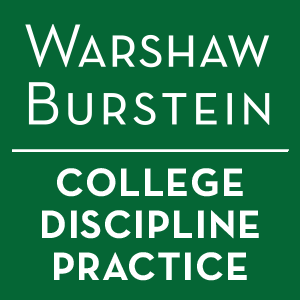-
Doe v. The University of Southern Mississippi, Case 2:18-cv-0015-KS-MTP (S.D. Miss. Sep. 26, 2018)
09/26/2018John Doe was a student at the University of Southern Mississippi, a public university. Doe was suspended for one year following a finding of responsible at the end of the school’s disciplinary process. Doe filed an appeal with the Title IX office and then filed for a preliminary injunction with the district court. Doe based his request for a preliminary injunction upon a Title IX claim under an erroneous outcome theory, and Section 1983 claims for substantive and procedural due process violations. The court found that Doe only carried his burden for a preliminary injunction as to the procedural due process claim and chose not to address the other claims in its decision.To be entitled for injunctive relief, a party must show “(1) a substantial likelihood that plaintiff will prevail on the merits, (2) a substantial threat that irreparable injury will result if the injunction is not granted, (3) the threatened injury if the injunction is denied outweighs any harm that will result if injunction is granted, (4) and the granting of the injunction will not disserve the public interest.”
The court found that Doe was likely to prevail on the merits of his procedural due process claims. The question before the court was: “under the circumstances of the case, how much procedure is due?” This is determined by looking at the nature of the private interest involved; the risk of erroneous deprivation under the procedures used, and the value of additional safeguards; and the University’s interest, including the burden any additional procedural safeguards might entail. The procedure required fluctuates depending on the severity of the possible sanctions. The more severe the sanction, the more formal procedures are necessary. The risk of an erroneous outcome in a he said/she said situation is high, and when credibility is at issue, it is crucial to be able to attempt to draw out the truth. As a result, it was inadequate for the school to hold a hearing where witnesses were brought before a panel without John Doe being present and allowed to cross-examine the witnesses. The flaw in the procedure used was highlighted by the fact the panel accepted Jane Roe’s version of events despite multiple witnesses questioning her truthfulness, and the only highly trained investigator involved in the process flatly said he did not find her credible. Allowing Doe to make changes to the summaries of the testimony only creates more he said/she said, and is not a substitute for cross examination.
The court also found John Doe met the other three factors required for injunctive relief. John Doe was the youngest of eighteen children and was attending college on an athletic scholarship. If Doe was suspended for a year, he would lose his athletic scholarship, and would have no way of paying to finish the final six hours he needed to graduate. The court found that Doe’s return to school would not result in harm to Jane Roe, or the University at large. Finally, the court held that protecting a person’s constitutional right to due process is always in the public interest, thus the public interest is not only not disserved but also served.
Blog
